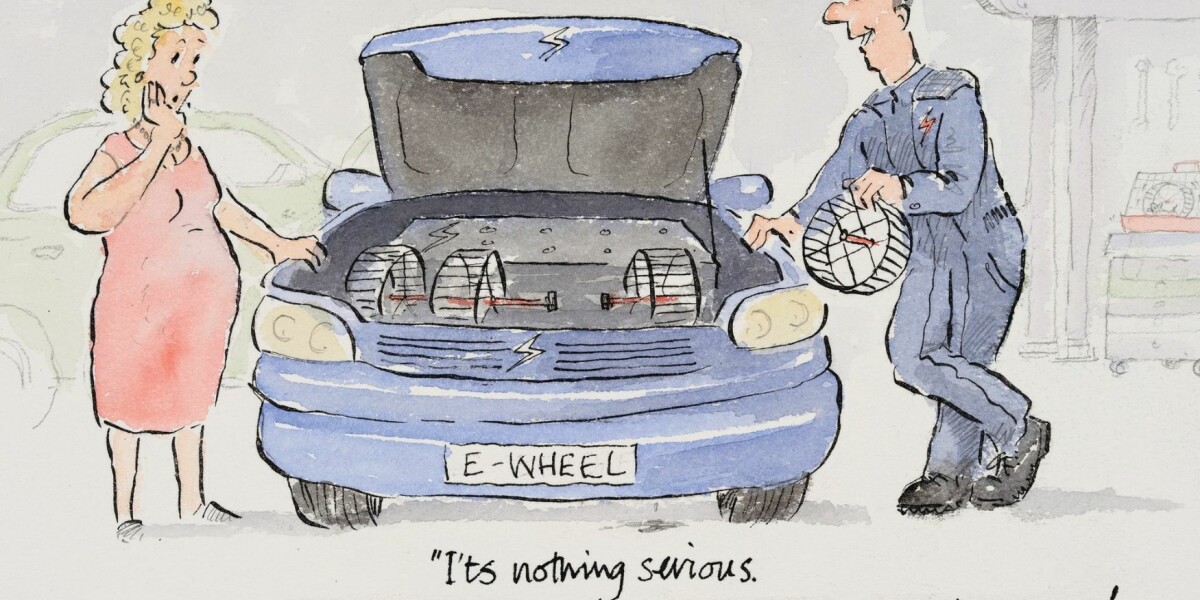
- Select a language for the TTS:
- UK English Female
- UK English Male
- US English Female
- US English Male
- Australian Female
- Australian Male
- Language selected: (auto detect) - EN
Play all audios:
The symbolic sale of the millionth electric car in France took place at the end of last year, bringing the proportion of battery-powered cars to 2.5% of the nation’s fleet. They are no
longer the objects of curiosity they once were and have even penetrated to small-town France. Government climate commitments signed into international treaties mean the percentage should
rise to 15% of all cars on the road by 2030. As with many official targets though, there are real doubts that it will be met. READ MORE: WHAT ARE RATES FOR LONG-TERM ELECTRIC CAR RENTALS IN
FRANCE? PRICE AND CHARGING ISSUES The main reason is that electric vehicles (EVs) are expensive to buy. They also face the paradox that they are theoretically more suitable for town and city
driving, but most buyers in France live outside urban areas. This is largely due to charging issues. Anyone who has lived in Paris will be familiar with the late evening rush of people
leaving their apartments at 22:00, when parking becomes free, to move their car closer to home. With electric cars, the on-street parking ballet is even more complicated – not only must you
find a space, but one with a public charging point. Even people with access to garage parking in their apartment block can have problems. Rules about individual electricity points in common
areas usually ban them. READ MORE: MORE FRENCH SUPERMARKETS SELL LOW-COST HOME CHARGERS FOR ELECTRIC CARS ELIGIBILITY FOR TWO MAIN EV GRANTS Two main government grants aim to boost the
number of EVs on the road: the _bonus écologique_ and the _prime à la conversion_. To benefit from the _bonus écologique_, you must live in France and be over 18. The car you buy has to be a
private vehicle (_voiture particulière_), and be bought outright or rented for at least two years. It must be new, with the _carte grise_ in your name, and approved for French roads. It
must also be manufactured in _série definitive_ – small runs of experimental vehicles are not eligible – and weigh less than 2.4 tonnes. Once it is bought/rented, you cannot sell it for 12
months, nor before it has covered at least 6,000km. Hydrogen cars are also eligible but there are so few that this is academic. The vehicle must cost less than €47,000, which means
sought-after models from makers such as Porsche or Jaguar do not qualify. Even Peugeot’s medium-sized EV, a 308 SW, only scrapes in through a _prix remise_ Peugeot discount. READ MORE:
BUYING AN ELECTRIC CAR IN FRANCE: HOW GOVERNMENT AID IS CHANGING CHECK THE EV’S ENVIRONMENTAL SCORE Finally, a minimum environmental score of 60 points applies. This score environnemental is
based mainly on CO2 calculations, which include factors such as whether the steel and battery are made in China using electricity from coal, and transported by polluting ships. The
government has published an initial list of eligible models, which may be extended at a later date. For the moment, it almost entirely features cars produced in Europe, with the exception of
the Mazda MX-30, produced in Japan but fitted with a very small battery. Those produced in China, such as the Dacia Spring and the Tesla Model 3, are not included. You can find more details
about eligibility and other grant conditions HERE. HOW MUCH CAN YOU CLAIM TOWARDS AN EV? The amount you are entitled to is set at 27% of the purchase cost, including all taxes, plus the
cost of the battery, where applicable, if the battery is leased. The grant is capped at €5,000 for private individuals, but this is increased by €2,000 if the car is purchased or leased by
someone whose taxable income is less than or equal to €14,089, bringing the total grant up to €7,000 in this case. The _prime à la conversion _–when an old car is scrapped and replaced with
a less polluting one – offers another €6,000 towards an electric car, but only if you earn less than €14,089 and use it to go to your workplace at least 30km from home. The _prime à la
conversion_ is currently under revision. EV LEASING SCHEME WAS VICTIM OF OWN SUCCESS New to the government’s EV grant offering this year was _Mon leasing électrique_, where electric cars
could be leased for €100 a month – and in some cases less. Introduced in January, the scheme was limited to people with annual declared incomes of €15,400 or less, who lived at least 15km
from their place of employment, and covered at least 8,000km a year for work. A big benefit of the scheme was that there were no upfront costs, which in other leasing deals can sometimes
amount to several thousand euros. Rental agreements were for a minimum of three years, with an option to purchase at the end. After six weeks and 50,000 approved applications, the government
shut down the scheme for the rest of 2024 to avoid breaking budgets. READ MORE: €100-A-MONTH ELECTRIC CAR SCHEME CLOSED FOR 2024 DUE TO DEMAND MORE PUBLIC-ACCESS CHARGERS PROMISED
Government help has been extended to encourage public-access chargers – with €268million promised at the end of 2023. Driving around, it is obvious more chargers are available but most are
usually empty as using them is so much more expensive than charging at home. Some supermarkets offer free charging in their car parks but you may need to show proof of a loyalty card, and
there are often charging time limits. The most extensive charger network is Tesla’s, but it is reluctant to let other brands use them. ARE EVS CHEAPER TO MAINTAIN? Part of the argument for
the switch to electric cars was that they would be cheaper to maintain. However, a series of articles in French media recently claimed the opposite, insisting repair bills are being pushed
up because only specially qualified mechanics can work on EVs – and there are not enough of these mechanics. But Renault, which has been mass producing EVs in Europe longer than anyone else,
says it has no records showing they are more expensive than petrol or diesel repairs. And insurers told _The Connexion_ they had not noticed a huge difference. SELL ELECTRICITY BACK TO THE
GRID In spite of the problems, EVs are here to stay, and more models, such as the Citroën ë-C3 and the Renault 5 E-Tech, are due to be sold for the first time this year. The Renault 5 is
particularly interesting as its battery is designed to supply electricity back to the grid. Participating owners will be paid. Details are still being worked out, but it shows that French
engineers believe EV technology could affect much more than our daily drive. RELATED ARTICLES BIG RISE IN CAR THEFTS IN FRANCE: THESE ARE THE MODELS MOST STOLEN MONEY-MAKER: HOW TO RENT OUT
YOUR CAR IN FRANCE AIRBNB-STYLE WHAT SHOULD YOU EXPECT TO PAY FOR CAR INSURANCE IN FRANCE?









